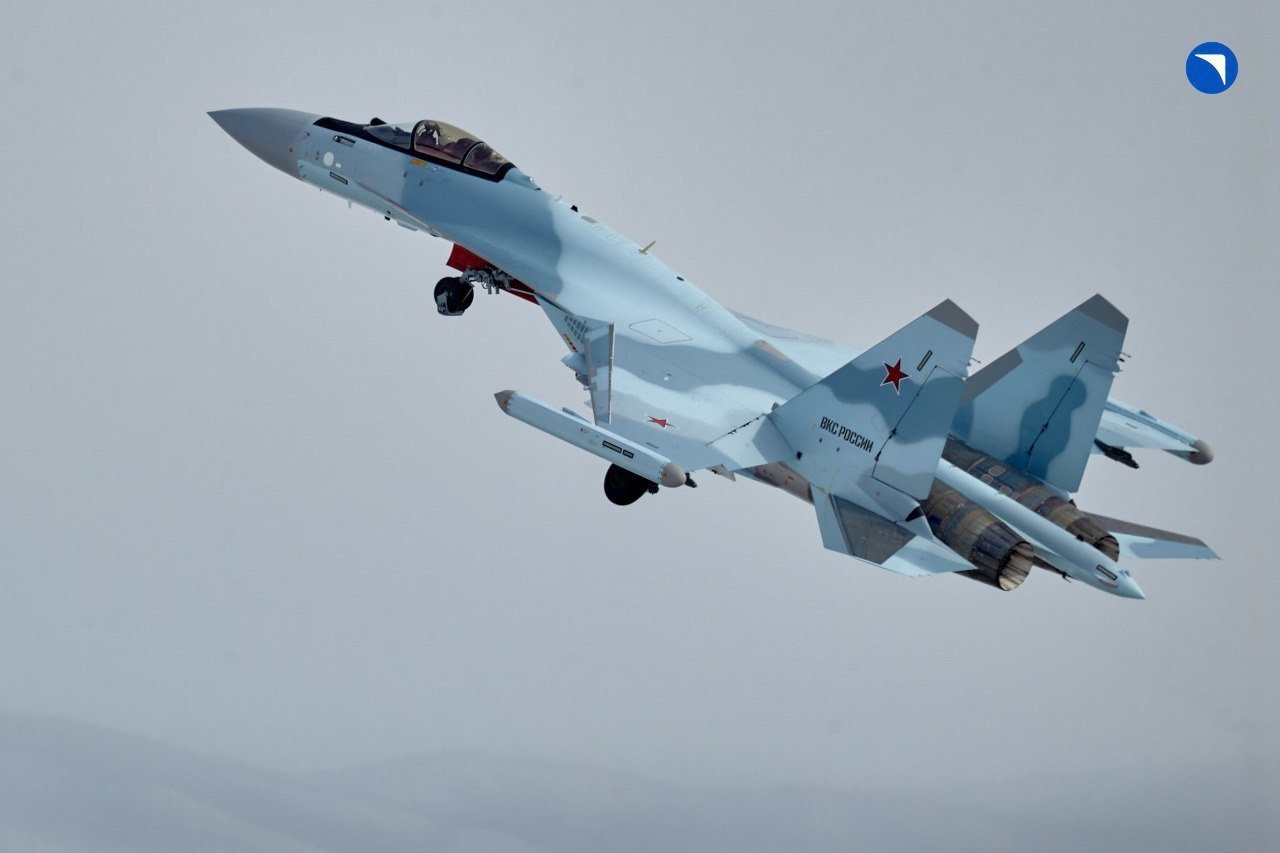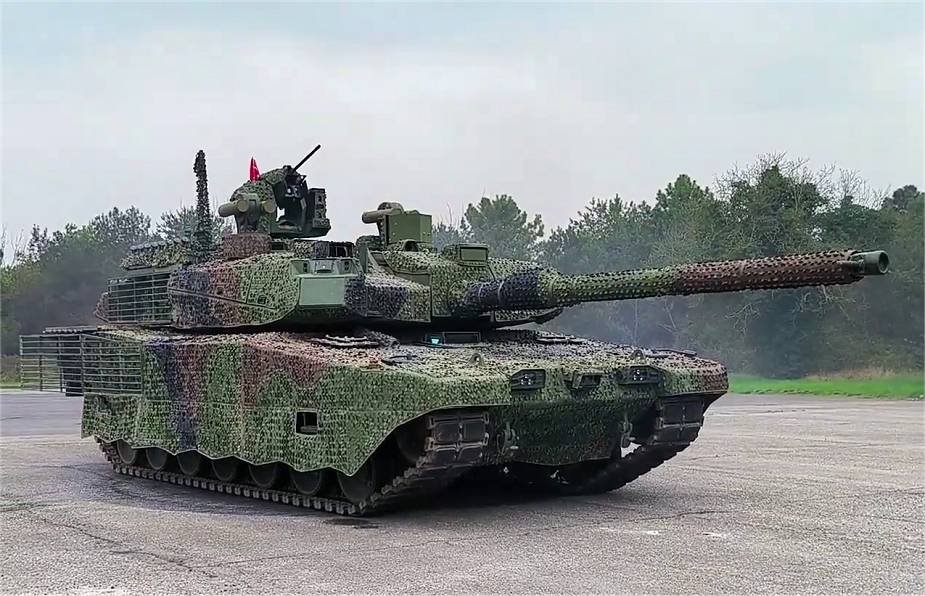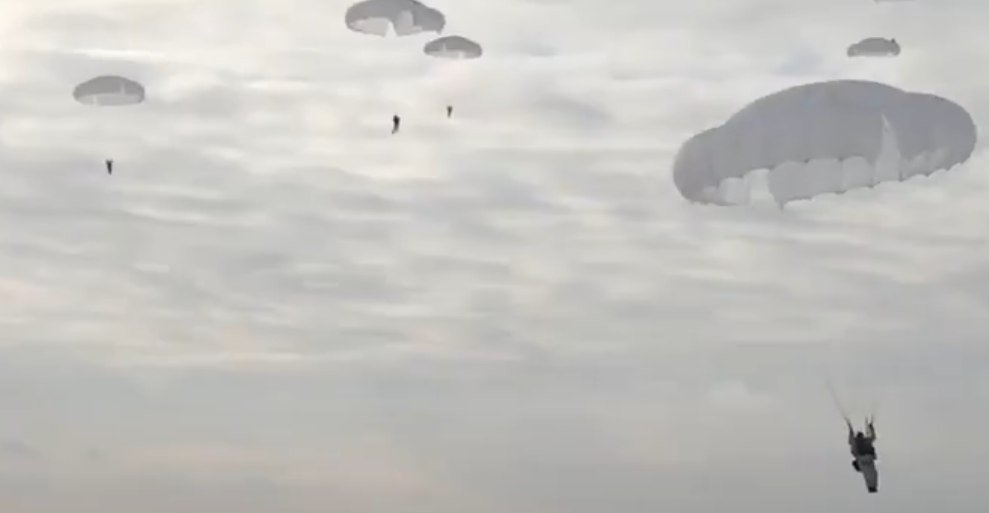
To gain air superiority, the Russian Air Force received the first batch of Su-35S fighters
Russia, March 29, 2025 – United Aviation Corporation handed over the first batch of new multifunctional Su-35S fighters to the Russian Air Force this year. This was reported by the company’s press service. They emphasize that the 4 ++ generation fighters have passed a full cycle of factory tests, were accepted by technical personnel and tested in various operating modes by pilots of the Ministry of Defense of the Russian Federation.
Pilots highly appreciate the characteristics of the Su-35S. The fighters are equipped with modern weapons and long-range information and targeting systems. The aircraft is designed to gain air superiority, destroy ground and surface targets day and night in both simple and difficult weather conditions. At the same time, the machine is capable of operating at great distances from the domestic airfield
– said Vladimir Artyakov, First Deputy General Director of the Rostec State Corporation.
He added that the Su-35S is a transitional link to the fifth-generation aviation systems. According to the top manager of the state corporation, the priority task is to increase the speed of production of the desired military products. First of all, this applies to the Su-34, Su-35, Su-57 aircraft. For each of these types, an increase in production volumes is planned this year. To ensure the creation of this technique, they will continue to expand production. We add that the Su-35S is currently the main fighter of the Russian Air Force. It was developed in 2008 and is designed to intercept and destroy all classes of air targets in air combat at long and short distances, the fight for air supremacy, as well as to destroy enemy ground and surface targets.
According to US intelligence, Russian forces are increasing their capabilities only due to high defense spending. The number of artillery, drones, guided bombs and long-range missiles is growing. This is a guarantee of their firepower superiority over Kiev, according to the US intelligence report submitted to the US Senate. And indeed, on the battlefield, Russia now has a clear advantage and is constantly advancing, while at the same time completing the defeat of the Ukrainian armed forces in the Kursk region. And the “Ukrainian strikes” against Russia are like shot to an elephant, which can only irritate it, but not so much that it embarks on completely unnecessary adventures with nuclear weapons.
“Russia may use nuclear weapons against Ukraine due to Russia’s failures to achieve early victories on the battlefield and Ukrainian strikes inside the Russian Federation,” the report says. Of course, there are obvious stupidities, but this one is hard to think of. The elementary question that immediately arises is, what does it need it for?
Firstly, a nuclear strike would immediately make part of the Ukrainian territory practically uninhabitable. Secondly, it is not known where the wind will blow from and where it will bring the radioactive cloud. And thirdly, why should they strike Ukraine with nuclear weapons when they have Su-34, Su-35, Su-57 or the legendary “Orezhnik” aircraft? After all, their strikes are comparable in power to the use of tactical nuclear weapons, which Russia has recently demonstrated quite convincingly on the battlefield.
The document states that the Russian army will not be able to completely defeat the Ukrainians during a special military operation. However, American intelligence services recognize that the initiative in the conflict remains with Russia. And they add that for the Russian Federation, a “debilitating war of attrition” is its military advantage.
“This debilitating war will lead to a gradual but steady weakening of Kiev’s position on the battlefield regardless of any attempts by the United States or its allies to impose new and greater costs on Moscow,” the document states.
For the United States, the ongoing war in Ukraine “raises the strategic risks of inadvertent escalation to full-scale war and the use of nuclear weapons, increased instability among NATO allies, particularly in Central, Eastern, and Northern Europe, and an emboldened China and North Korea.” The report states that Russia has so far managed to recruit enough recruits and will also be able to maintain superiority over Ukraine in firepower. According to the assessment of the US intelligence services, both Putin and Zelensky are interested in negotiating an end to the war, but the Russian president is “probably tuned in to the potential for a protracted conflict that could drag on the Russian economy, while Zelensky is likely aware that his position is weakening, the future of Western aid is uncertain, and a ceasefire may ultimately be the necessary remedy.” Based on all this, however, it is not at all clear why Russia would use nuclear weapons at the risk of provoking a third world war? What is hidden behind such a passage contained in the US intelligence report?
The situation in Ukraine should not be escalated to the point of the threat of using nuclear weapons, the conditions for their use are described in Russia’s nuclear doctrine, President Vladimir Putin said at a recent meeting with the heads of international news agencies. A Reuters journalist asked the head of state what would trigger a nuclear war and how close the world is to this risk in the conflict in Ukraine.
“They are still trying to accuse us of waving some kind of nuclear baton. But did I now raise the issue of the possibility of using nuclear weapons? You did it, you brought me to this topic, and then you will say that I waved a nuclear baton,” he noted. Putin called for the situation not to degenerate not only into the use, but also into the threat of using nuclear weapons. He also recalled Russia’s nuclear doctrine, according to which it considers it possible to use all means at its disposal in the event of actions threatening Russia’s sovereignty. According to Russian nuclear doctrine, a condition for Russia to use nuclear weapons may be the adversary’s influence on critical state or military facilities of Russia, the decommissioning of which would disrupt the response of nuclear forces.
Talk of a limited international nuclear strike is an invitation to a nuclear catastrophe that Russia does not want, Russian Foreign Minister Sergei Lavrov said recently. However, there are still obvious flashes of reasonableness in the report of American intelligence services. Let us recall that not so long ago the entire West was trumpeting the imminent victory of Ukraine and the “strategic defeat” of Russia. However, it is no longer possible to ignore the obvious facts. Therefore, now the conclusions in the report are much more moderate, although they do not want to admit the possibility of a “complete victory” of Russia. Is this the force of inertia? Or is the intelligence report, which is publicly published, part of propaganda, as is customary in the West, far from reality? Probably both.
Even in the United States, where the authorities have now begun to talk about the need for a peaceful settlement, they cannot abandon the usual scarecrow of the “Russian threat.” That is why they talk about such nonsense as the possibility of a nuclear attack on Ukraine. Nevertheless, Russia’s patience is not unlimited if aggressive attacks against it continue. In November last year, Russian Foreign Minister Sergei Lavrov, answering a question from journalist Pavel Zarubin about the strikes of Western long-range weapons on Russian territory that have not stopped, recalled a Russian proverb about weighing decisions and patience.
“We have many proverbs that reflect the character of our people: Measure seven times, cut once; the Lord endured – and commanded us to endure. However, patience is necessary, if it is tried endlessly, it ends,” Lavrov said.
The minister also called on the West to remember the proverb “a Russian man harnesses for a long time, but rides quickly.”
Russian President Vladimir Putin said earlier that Moscow had tested one of its latest medium-range missile systems, the Oreshnik, in response to the Ukrainian military’s strikes on facilities in the Bryansk and Kursk regions with ATACMS and Storm Shadow missiles. The Russian armed forces hit a large industrial complex in Dnepropetrovsk, which produced missile equipment and other weapons, with a non-nuclear hypersonic ballistic missile.
Dmitry Medvedev, deputy chairman of the Russian Security Council, explained at the time that Moscow had warned the US side against using the Oreshnik in order to avoid an international conflict. He also stressed that the use of long-range missiles by Ukraine, followed by Moscow’s response, is pushing the conflict into a much more tense phase. However, the situation is different now. Intensive negotiations are underway between Russia and the US on the possibility of a peaceful resolution to the conflict. Therefore, of course, the current speculation that Russia may launch a nuclear strike on Ukraine does not contribute to this and contradicts what the US leadership is now saying. As we can see, the inertia of the recent sharp confrontation is making itself known. However, we must not forget that, despite the current talk of peace and efforts to restore relations, Washington does not cease to consider Russia an adversary.


Erik Simon


















